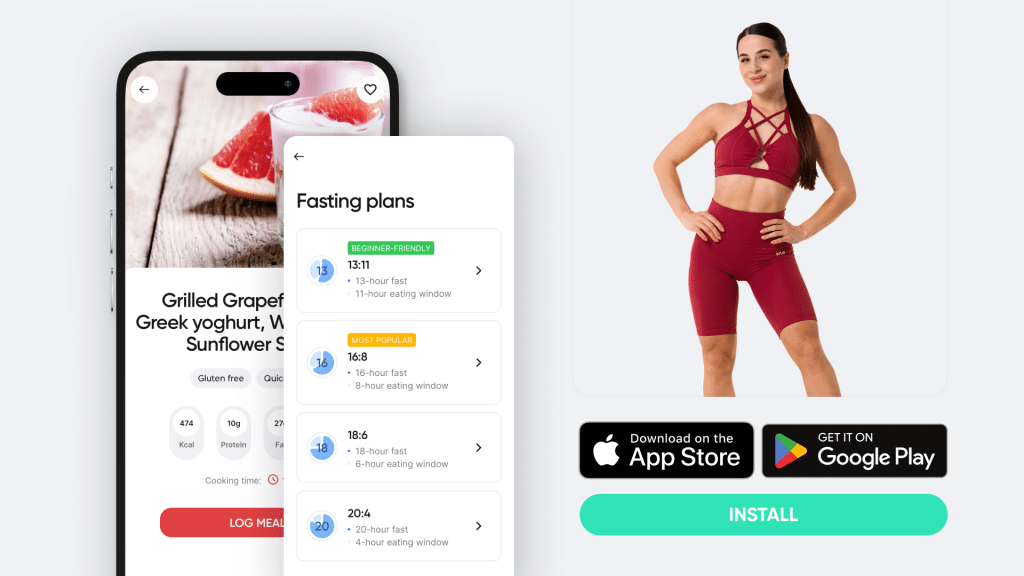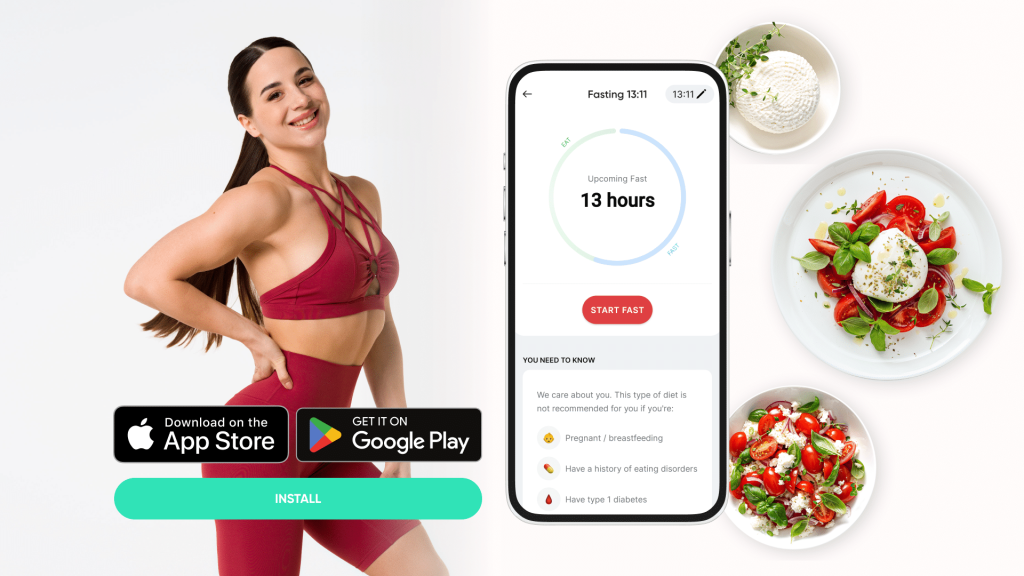So, you’ve braved the hunger pangs, gotten past the initial discomfort of fasting, and now you’re on the final stretch – breaking your fast. This crucial step is often overlooked but may be as important as the fast itself. Done improperly, it can derail your progress and even potentially harm your health. That’s why we’ve created this guide; it aims to take you through the process of ending your fast in a way that maximizes the benefits, minimizes potential drawbacks, and ensures a smooth transition back to regular eating. We’ll explore the science behind breaking a fast, the foods that aid this process, and the common mistakes to avoid. Let’s get started.
How To Break A Fast Properly
Breaking a fast properly is not just about reintroducing food to your system, but more importantly, it’s about doing so in a way that optimizes your body’s transition from a fasting state to normal metabolic functions.
When you fast, your body undergoes various physiological changes to adapt to the absence of food. These include shifting energy sources from glucose to stored fats and ketones, slowing down metabolic rate to conserve energy, and enhancing cellular repair processes (2).
This adaptive state is said to be beneficial, but it also makes your body more susceptible to sudden changes, such as a rapid influx of food.The best approach to break a fast is gradual and mindful eating.
Start with small amounts of easily digestible foods, and slowly increase quantity and variety over time. This allows your digestive system to re-adjust at its own pace, minimizing potential discomfort like bloating, cramps, or even more serious complications like refeeding syndrome.
Conversely, the worst approach is to indulge in large, heavy meals immediately after fasting, especially those high in sugar and fats. This can shock your system, leading to a range of issues, from digestive discomfort to hyperglycemia and even severe metabolic disturbances in extreme cases.
Note that everyone’s body responds differently to fasting and breaking fasts. Therefore, listening to your body’s signals and adjusting your eating plan accordingly is crucial. Remember, the goal is not just to end the fast, but to do so in a way that enhances your overall health and well-being.
Read More: Bone Broth Fasting: A Comprehensive Guide To Its Benefits And How-To
How Do You Break A Long Fast Safely?
Breaking a long fast safely requires careful planning and understanding of your body’s needs. When you’re fasting for an extended period, your body enters a state of ketosis, using stored fat as its primary energy source. Suddenly reintroducing large amounts of food can shock the system, leading to potential complications.
One of the most serious concerns is refeeding syndrome, a potentially fatal condition characterized by severe fluid and electrolyte shifts. This is caused by rapid reintroduction of glucose (carbohydrates) to your body after a long period of starvation or malnutrition. Symptoms include irregular heartbeat, fatigue, muscle weakness, and in severe cases, organ failure (3).
This is unlikely to occur after a short fast, but to avoid any complications, start with small portions of easily digestible, nutrient-dense foods. Gradually increase the quantity and diversity of foods over several days, giving your body time to adjust to processing food again.
Hydration is also crucial during this period. Water, herbal tea, or bone broth can help maintain electrolyte balance and aid digestion (1). Another safety concern is rebound high blood sugar, which can occur if you consume high-sugar foods immediately after a fast. This can lead to symptoms like dizziness, fatigue, and confusion.
Finally, remember that breaking a fast is not just about the physical aspects. It’s also important to prepare mentally. Be mindful of your eating, savor each bite, and listen to your body’s signals of hunger and fullness.
How Do You Break A 25 Hour Fast?
Breaking a 25-hour fast should be done carefully and gradually. Here are some steps you can follow:
Hydrate
Begin by drinking a glass of water or a cup of broth. This helps to rehydrate your body and prepare your digestive system for food.
Start With A Light Snack
After hydrating, start with a light snack such as a piece of fruit or a handful of nuts. This will begin to reintroduce food to your digestive system without overwhelming it.
Wait For 30 Minutes To An Hour
Allow some time for your body to adjust before eating a larger meal.
Eat A Balanced Meal
Your first larger meal should be balanced and nutritious. Include a source of lean protein, such as chicken or fish, along with some cooked vegetables and a small portion of complex carbohydrates.
Stay Hydrated And Listen To Your Body
Continue to drink plenty of water throughout the day and pay attention to your body’s hunger and fullness cues.
Resume Normal Eating Schedule
Once you’ve broken your fast and your body has adjusted, you can resume your regular eating schedule.
If you wish to cinch your waist, tone up your bat wings, blast away the muffin top – our fitness app was created to cater to all your needs! BetterMe won’t give excess weight a chance!
How Do You Break A 3 Day Fast?
While the basic principles of breaking a fast remain the same regardless of its duration — hydrate, start small, eat light and easily digestible foods, gradually increase food intake, and listen to your body — the longer the fast, the more careful you should be.
Breaking a 3-day fast is a process that should be handled with care to avoid overwhelming your digestive system. Here are some steps to guide you through it:
Hydrate
Start by drinking water with a pinch of salt for electrolytes, or broth. Hydration is crucial after a longer fast.
Begin With A Liquid
After a longer fast, it can be beneficial to start with a liquid such as bone broth or a smoothie. This will provide your body with nutrients while being gentle on your digestive system.
Wait And Observe Your Body
Give your body a few hours to adjust before introducing solid foods.
Introduce Soft Food
Start with soft, easily digestible foods like cooked vegetables or a ripe banana. Avoid anything too heavy or difficult to digest.
Gradually Increase Food Intake
Over the next 24-48 hours, gradually increase the quantity and variety of foods you’re eating. Add in sources of protein like eggs or tofu, and increase the amount of complex carbohydrates.
Stay Hydrated And Listen To Your Body
Continue to drink plenty of fluids, listen to your body’s signals, and eat slowly and mindfully.
Slowly Resume Normal Eating Schedule
As your body adjusts, you can slowly return to your normal eating pattern. This might take a few days after a 3-day fast, so be patient with yourself.
Read More: Can Intermittent Fasting Cause Weight Gain?
Best Foods To Break Intermittent Fasting
Below is a list of some of the best foods to break intermittent fasting safely.
Bone Broth
Bone broth is a great first food to consume after a fast because it’s easy on the digestive system and packed with nutrients. It’s rich in minerals that support the immune system and contains healing compounds like collagen, glutamine, glycine, and proline. It also contains electrolytes, which are important when breaking a fast. If you make your own, make sure to add salt.
Eggs
Eggs are a complete source of protein, which means that they contain all nine essential amino acids. They are also easily digestible and the protein they contain is highly bioavailable (easy for your body to break down and use). This makes them an excellent choice for replenishing your body after a fast.
They also contain several important vitamins and minerals. To make them even better you could scramble them with some olive oil for added healthy fats.
Fruits
Fruits, such as bananas, are high in electrolytes like potassium and magnesium which help to restore the body’s natural balance. They’re also high in fiber and natural sugars, providing a quick energy boost.
Choose whole fruits instead of juices to maximize fiber content and minimize a rapid spike in blood sugar.
Fish
Fish, especially fatty fishes like salmon and mackerel, are high in omega-3 fatty acids, which are beneficial for heart health. They’re also an excellent source of lean protein.
Cooked Vegetables
Cooked vegetables are easier to digest than raw ones. Combining these with a protein like chicken or fish and a complex carbohydrate can make a balanced meal.
Fermented Foods
Foods like yogurt, kefir, and sauerkraut can help restore the balance of healthy bacteria in your gut. They’re also generally high in protein and calcium.
Avocado
Avocados are rich in healthy fats, fiber, and various important nutrients. They can provide a feeling of satiety and help control blood sugar levels.
Soups
Soups that contain protein and easily digestible carbs, such as lentils, tofu, or pasta, can gently break a fast. Avoid soups made with heavy cream or a large amount of high-fiber, raw vegetables.
Nuts And Nut Butters
These are high in protein and healthy fats. They’re also convenient and easy to digest, making them a good option for breaking a fast.
Complex Carbs
Foods like sweet potatoes, yams, beans lentils, and oats provide sustained energy and are high in fiber, which is good for the digestive system.
BetterMe is your fast-track ticket to a long-lasting weight loss! Tailor your fitness journey and maximize your results with just a couple of swipes!
What Foods Should You Avoid When Breaking A Fast?
When breaking a fast, it’s crucial to reintroduce foods in a gentle and thoughtful manner. Certain foods can cause discomfort or even harm if consumed immediately after a fasting period. Here are some foods you should avoid:
Fried Foods
Foods that are high in fat, particularly fried foods, can lead to feelings of discomfort and bloating. They can be harder to digest and may cause stomach upset.
Ultra Processed Foods
These often contain a high amount of added sugar and unhealthy fats, which may contribute to hyperglycemia after a fast. They also typically lack nutritional value.
Sugary Foods And Drinks
Consuming foods or drinks high in sugar can cause a rapid increase in blood sugar levels. This includes candies, cakes, sodas, and fruit juices.
Alcohol
After a fast, your body may be more sensitive to alcohol. It’s best to avoid it as it can increase stomach acidity and cause dehydration.
Caffeinated Beverages
Breaking your fast with caffeinated beverages like coffee or energy drinks can lead to dehydration and may cause irritability and restlessness.
Raw Cruciferous Vegetables
Foods like broccoli, cauliflower, and cabbage can cause gas and bloating when eaten raw. It’s better to consume these vegetables cooked after breaking a fast.
Dairy Products
Some people may experience lactose intolerance after fasting, with that in mind it’s best to reintroduce dairy slowly and in small amounts.
FAQs
Is Rice OK for Breaking a Fast?
Yes, rice can be a part of the meal you eat to break your fast. However, it’s recommended to start with something lighter and easier to digest like bone broth or a piece of fruit, then move on to more substantial foods like rice. Choose whole grain or brown rice over white rice as they are higher in fiber and nutrients.
What Is the Best Food to Eat After Fasting?
The best food to eat after fasting depends on the length of your fast. Generally, it’s recommended to start with something light and easily digestible. Bone broth, ripe fruits, and cooked vegetables are all good options. After a while, you can introduce lean proteins like chicken or fish, and complex carbohydrates like sweet potatoes or brown rice.
Is 72 Hour Fasting Good?
A 72-hour fast might have benefits, such as promoting autophagy (a cellular cleanup process) and improving insulin sensitivity. However, longer fasts should only be undertaken with medical supervision.
They’re not suitable for everyone, particularly those with certain health conditions or who are taking certain medications, pregnant or breastfeeding women, and individuals with a history of eating disorders.
Can You Eat Anything to Break a Fast?
While technically you can eat anything to break a fast, some choices are better than others. It’s recommended to start with light, easily digestible foods to avoid shocking your digestive system.
Avoid high-fat, fried, or sugary foods immediately after fasting as they can cause discomfort and high blood sugar levels. Always listen to your body and reintroduce foods slowly and gradually.
The Bottom Line
Breaking a fast properly is just as important as the fast itself. It’s crucial to reintroduce foods slowly, start with light and easily digestible options, and gradually increase food intake. Remember to stay hydrated and listen to your body’s signals.
With careful planning and mindfulness you can maximize the benefits of your fast while minimizing potential discomfort or complications.
DISCLAIMER:
This article is intended for general informational purposes only and does not serve to address individual circumstances. It is not a substitute for professional advice or help and should not be relied on for making any kind of decision-making. Any action taken as a direct or indirect result of the information in this article is entirely at your own risk and is your sole responsibility.
BetterMe, its content staff, and its medical advisors accept no responsibility for inaccuracies, errors, misstatements, inconsistencies, or omissions and specifically disclaim any liability, loss or risk, personal, professional or otherwise, which may be incurred as a consequence, directly or indirectly, of the use and/or application of any content.
You should always seek the advice of your physician or other qualified health provider with any questions you may have regarding a medical condition or your specific situation. Never disregard professional medical advice or delay seeking it because of BetterMe content. If you suspect or think you may have a medical emergency, call your doctor.
SOURCES:
- Fluid and Electrolyte Balance (2016, medlineplus,gov)
- Physiology, Fasting (2022, nih.gov)
- Refeeding Syndrome (2022, nih.gov)












